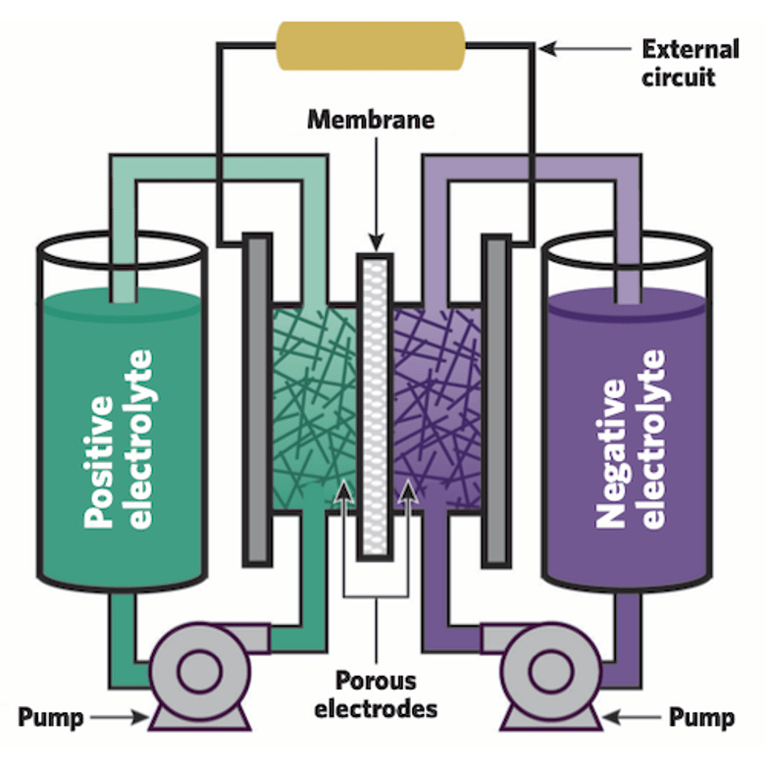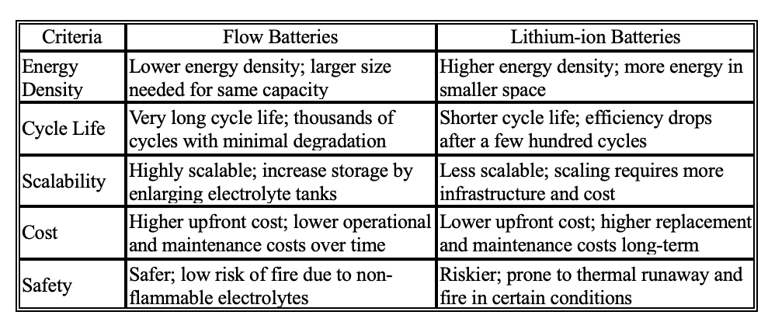The Imperative for Grid Storage & The Rise of Chemical and Thermal Innovators
The global energy landscape is undergoing a revolutionary transformation. The ambitious pursuit of decarbonization, driven by the rapid deployment of intermittent renewable energy sources like solar and wind, is fundamentally reshaping our electricity grids. However, the promise of a truly green, resilient, and reliable grid hinges on solving one of its most complex challenges: energy storage.
SUSTAINABLE TECHNOLOGIES
Aadesh Aslekar
8/9/20256 min read


Think of energy storage as a giant battery for the grid. It allows us to capture excess energy generated from renewable sources like solar and wind and then release it when needed.
The current energy storage champion, lithium-ion, has its Achilles’ heel. The sheer scale and extended duration required for a fully decarbonized grid demand a far more diverse and robust portfolio of storage solutions. The grid's inherent stability relies on a constant balance between supply and demand. With solar power fading at sunset and wind generation fluctuating, vast amounts of energy must be stored when abundant and released precisely when needed, often for many hours or even days. This imperative for long-duration, grid-scale storage transcends the current capabilities and economic viability of lithium-ion technology for every application, opening the door for a new generation of innovators.
This pursuit is not just about battery chemistry; it’s about ensuring energy security, enhancing grid flexibility, and making the 24/7 operation of a renewable grid a tangible reality. It's a critical frontier where industry professionals and academicians are collaborating to unlock the next wave of energy innovation.
A promising technology for performing this task is the flow battery. This electrochemical device can store hundreds of megawatt-hours of energy, enough to power thousands of homes for many hours on a single charge. Flow batteries have the potential for long lifetimes and low costs in part due to their unusual design. In the everyday batteries used in phones and electric vehicles, the materials that store the electric charge are solid coatings on the electrodes. “A flow battery takes those solid-state charge-storage materials, dissolves them in electrolyte solutions, and then pumps the solutions through the electrodes,” says Fikile Brushett, an associate professor of chemical engineering. This unique architecture offers a crucial advantage: the power (determined by the cell stack) and energy (determined by the electrolyte volume) capacities can be scaled independently. This modularity makes them particularly well-suited for grid-scale, long-duration applications.
Various chemistries are being explored, including the more established Vanadium Redox Flow Batteries (VRFBs), as well as emerging Zinc-Bromine, Iron-Chromium, and organic-based systems.


Design and operation of a flow battery.
Negative and positive electrolytes in large tanks contain atoms or molecules that can undergo electrochemical reactions to release or store electrons. Pumps send the electrolytes through separate loops to porous electrodes that are separated by a membrane. When the battery is delivering power, electrons liberated by reactions on one side travel to the other side, passing along an external circuit and powering devices on the grid. That movement forces other charged species, called ions, to pass through the membrane from one electrolyte to the other, maintaining the system's electrical neutrality. During charging, the opposite set of flows and reactions occurs as the battery stores power.
Credit: Dorothy Loudermilk, SCS Graphic Services, University of Illinois Urbana-Champaign
When comparing flow batteries to lithium-ion batteries, several key differences become apparent:


Future trends on Flow Battery:
Flow batteries are poised for significant growth, but it won’t be a simple overnight revolution. Think of it less like a sudden earthquake and more like tectonic plates slowly shifting. Here’s what the next 5-10 years might hold:
1. Cost Reduction & Scalability
Flow battery costs are dropping fast due to scale and innovation. This makes them highly competitive, especially for long-duration storage.
2. Niche Domination, then Broad Appeal
Currently strong in grid and industrial use, flow batteries will soon expand to new markets. Lower costs and better performance may even open residential use.
3. Technological Advancements
Expect steady R&D-driven gains in density, cost, and cycle life. No miracles, but meaningful, cumulative progress is on the way.
4. Supply Chain Development
A strong supply chain is essential for scaling flow batteries. A significant investment is needed to ensure future growth and accessibility.
5. Policy & Regulatory Support
Government incentives and clear regulations are vital for adoption. Without them, deployment will remain slower than the tech deserves.
Key Startups on Flow Batteries:
1. Flux XII (Madison, WI, USA) - Specializes in water‑based flow batteries using organic redox molecules and ion‑exchange membranes for grid storage. Backed by NSF grants and research‑driven development.
2. Quino Energy (San Leandro, CA, USA) - Harvard‑licensed quinone chemistry provides stable, non‐toxic, long-life redox flow batteries; ~$9.1M raised with major Seed round in early 2023.
3. BioZen Batteries (Santa Barbara, CA, USA) - Developing “Redoxolyte” carbon‑based organic electrolyte technology—non‑flammable, low cost, sustainable, and targeted for grid-scale use.
4. Jena Batteries (Germany) - Produces scalable metal‑free organic‑RFB systems beginning at ~40 kWh scale, suited for microgrids and island/off‑grid setups.
5. Rivus Batteries (Gothenburg, Sweden) - Developing organic, metal‑free electrolytes with stability past 20,000 cycles, plug‑compatible with existing RFB hardware. Seed funding stage (~€0.4M).
6. Dalian Rongke Power (China) - Leading utility‑scale VRFB deployments (e.g., 200 MW/800 MWh), vertically integrated vanadium production, expanding globally.
7. UniEnergy Technologies (UET) (Mukilteo, WA, USA) - Offers modular ReFlex VRFB systems (250 kW to multi‑MW) with enhanced energy density and acid blend electrolyte.
Another formidable contender in the long-duration storage race is Thermal Energy Storage (TES). This approach captures and stores energy in the form of heat or cold, to be released later for electricity generation or direct thermal applications. In its simplest form, this process includes heating water during periods of abundant energy, storing it, and later using the stored energy. This utilizes storage options like water, ice-slush-filled tanks, earth, or large bodies of water below ground.
Many different technologies can be used to achieve thermal energy storage and depending on which technology is used, thermal energy storage systems can store excess thermal energy for hours, days or months.
Thermal energy storage systems can be primarily classified into three types based on how the energy is stored: sensible heat, latent heat, and thermochemical storage.
1. Sensible Heat Storage: Stores energy by heating a solid or liquid without changing its phase. Common, simple, and uses materials like water, sand, or rocks.
2. Latent Heat Storage: Stores energy during a material’s phase change (like solid to liquid) at constant temperature. Uses phase change materials like paraffin, salts, and metals.
3. Thermochemical Storage: Stores energy through reversible chemical reactions, offering high energy density and minimal heat loss. Technically complex and costlier to implement.
Application and benefit of Thermal Energy Storage (TES):
Thermal energy storage has a range of applications in both residential and industrial sectors:
1. Enhanced Energy Management:
Thermal Energy Storage (TES) stores excess energy during times of low demand and releases it during peak periods. This helps balance the load and reduces dependence on expensive peak power plants.
2. Increased Renewable Usage:
TES allows surplus energy from renewable sources like solar or wind to be stored and used later. This helps overcome intermittency and ensures a more stable and reliable energy supply.
3. Improved System Efficiency:
TES systems capture and reuse waste heat that would otherwise be lost. This significantly improves the overall efficiency of energy systems.
4. Reduced Greenhouse Emissions:
By reducing reliance on fossil fuels and improving energy efficiency, TES plays a key role in lowering greenhouse gas emissions and promoting cleaner energy usage.
Key Startups/ companies on Thermal Energy Storage (TES):
Established Companies
1. EnergyNest (Norway)
Offers modular industrial-scale thermal batteries used in projects with Eni and Avery Dennison; backed by Siemens Energy and Infracapital
2. Antora Energy (USA)
Produces graphite-block thermal batteries capable of storing renewable heat for up to 50 hours, targeting industrial decarbonization. Raised $150M from BlackRock, Temasek, Breakthrough Energy, etc.
3. BrightSource Energy, Abengoa Solar, Siemens AG (various)
Major developers of molten‑salt TES systems integrated with concentrated solar power (CSP) for utility-scale applications
Startups & Emerging Innovators
1. Eco-Tech Ceram (France):
Focuses on industrial thermal storage and material recovery. Has secured €16.5M in funding.
2. MGA Thermal (Australia):
Develops modular thermal block technology for industrial steam and process heat. Raised around A$14M.
3. Harvest Thermal (USA):
Creates home-scale heat batteries integrated with electric heat pumps. Raised approximately $12.8M, targeting the residential sector.
4. Malta Inc (USA):
Develops electro-thermal energy storage systems using heat and cold. Has received ~€20M in funding; designed for grid and building applications.
While chemical and thermal solutions offer exciting pathways to grid stability and decarbonization, energy can also be stored by harnessing the fundamental laws of physics through motion, pressure, or elevation. In our next instalment, we'll explore the ingenious world of mechanical storage, gravity batteries, and other cutting-edge physical solutions poised to redefine the scale and duration of energy reserves, offering complementary approaches to our evolving energy needs.
References:
Flow batteries for grid-scale energy storage | MIT Energy Initiative
What In The World Are Flow Batteries?
What is a Flow Battery: A Comprehensive Guide to Understanding and Implementing Flow Batteries
What is a flow battery? - The International Flow Battery Forum
What Are Flow Batteries? A Beginner’s Overview
Flow Batteries: The Seismic Shift Rocking the Energy Storage World? - in4research
What is thermal energy storage? – 5 benefits you must know | Danfoss
Thermal Energy Storage - MEP Academy
How Does Thermal Energy Storage Work?
Thermal Energy Storage - online version
Thermal energy storage system integration forms for a sustainable future - ScienceDirect
Connect
info@energizetomorrowus.com
© 2025. All rights reserved.


